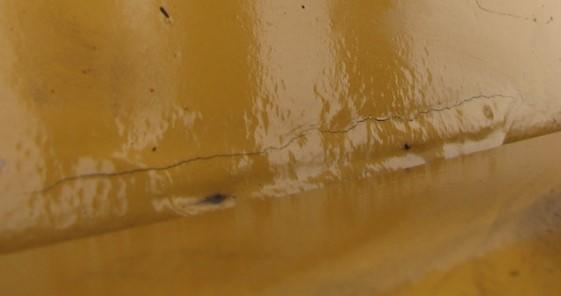The services of the metallurgical department of EMHA are often required in case of a dispute. This case involved a gigantic “scissors” which was used to cut shipwrecks in shallow water.
Only after several months of use, cracks began to appear at several locations of the boom. The insurance company involved did not quite know how to handle the costs of this failure, particullarly as this was not a standard item. Emha was engaged to evaluate the failure, and in particular the root cause. During a visit to the site and inspection of the crane it appeared that one inportant aspect of the damage was in the definition of the tool. The manufacturer had designed a cutting tool, suitable for cutting through steel plates. The end-user had ordered a demolition tool, which he used for cutting, pulling, lifting and more. Some of this was unavoidable, as quite often the tool was stuck under water and had to be pulled from the wreckages it was cutting. Our investigation clearly indicated fatigue as being the cause for the cracks. But the question remained: had the cracking also occurred during use as defined by the manufacturer? In other words: would cutting only result in fatigue? Once the crane had returned to the Netherlands and had been repaired, we instrumented the boom with strain gauges and simulated “normal” use. The measured stresses were compared to those predicted in a finite element model.
From these stress measurements could be learned that stresses were quite high but should not have led to cracks in such a short term.

